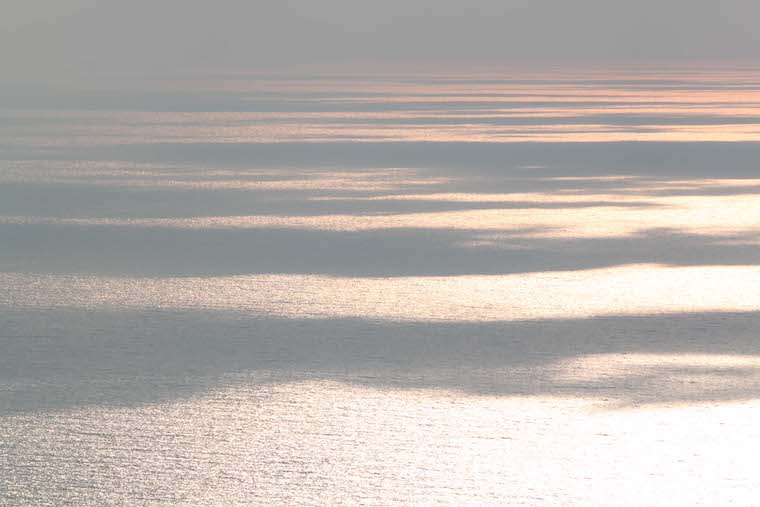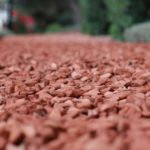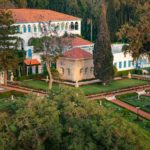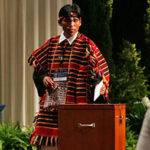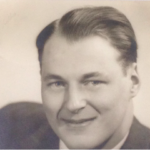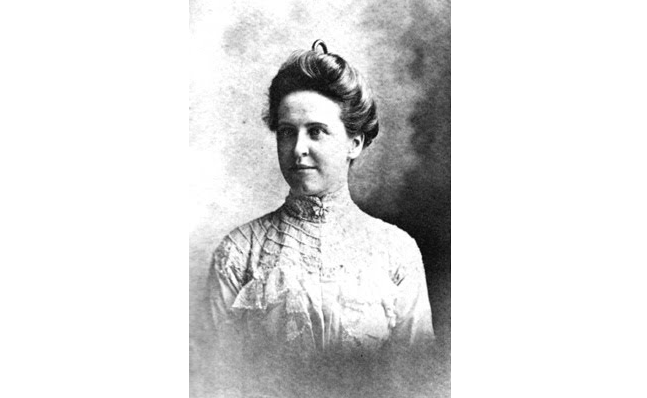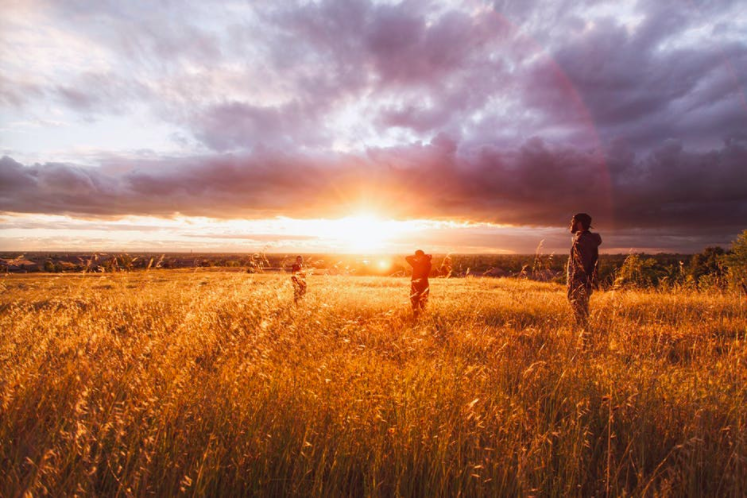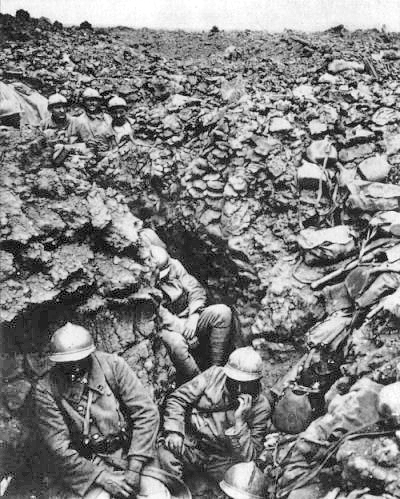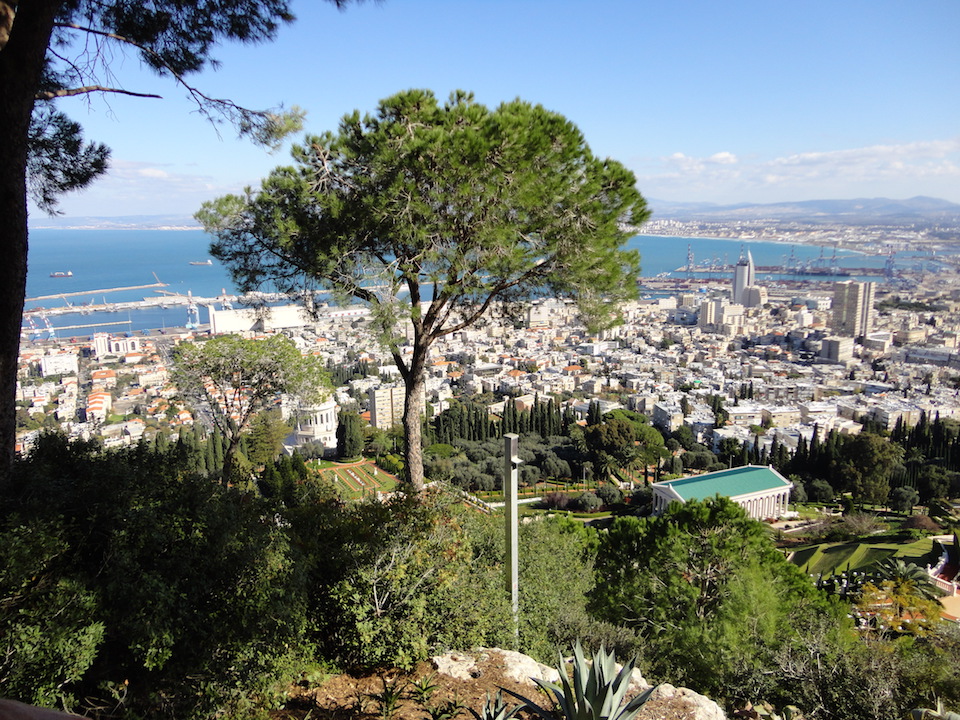
Bahá’u’lláh’s Footsteps on the Mountain
 Bahá’u’lláh’s venerable figure slowly ascended the slope of Mt Carmel followed by his disciples. He would have been wearing the light coloured robes and taj headdress characteristic of him; his his sky-blue eyes and face framed by a long beard. Perhaps he carried a staff to assist him in ascending the steep slope of the mountain. His footsteps traced a path leading to a site overlooking the brilliant sea: the most westerly point of the mountain before it plunges down into the sea. Most of the mountain slope was a rock strewn wasteland, little in the vicinity. Below them, however, was an ancient Christian monastery and nearby sites known to local people as the “Caves of Elijah”.
Bahá’u’lláh’s venerable figure slowly ascended the slope of Mt Carmel followed by his disciples. He would have been wearing the light coloured robes and taj headdress characteristic of him; his his sky-blue eyes and face framed by a long beard. Perhaps he carried a staff to assist him in ascending the steep slope of the mountain. His footsteps traced a path leading to a site overlooking the brilliant sea: the most westerly point of the mountain before it plunges down into the sea. Most of the mountain slope was a rock strewn wasteland, little in the vicinity. Below them, however, was an ancient Christian monastery and nearby sites known to local people as the “Caves of Elijah”.
Monarchs and clerics had sought to destroy Bahá’u’lláh and his teachings. Despite years of exile and imprisonment they had failed. For forty years, despite every difficulty and agonising sacrifices, an uninterrupted stream of teachings had flowed out from Bahá’u’lláh’s pen. It was 1891, the last year of Bahá’u’lláh’s life. For three months Bahá’u’lláh had lived in a tent pitched at the base of the mountain.
On this day Bahá’u’lláh had come for a special purpose to Mt Carmel; a mountain sacred to peoples of that part of the world for thousands of years. He came to lay the enduring foundations of his faith and to issue a spiritual proclamation – one of the central charters of the Baha’i Faith.
It was in this place, on a day such as this, that Bahá’u’lláh revealed the Tablet of Carmel. Some of the depth of emotion that Báha’u’lláh would have felt is evident in the tablet itself.
He, verily, loveth the spot which hath been made the seat of His throne, which His footsteps have trodden, which hath been honored by His presence, from which He raised His call, and upon which He shed His tears.[1]
Some of the circumstances in which Bahá’u’lláh revealed this work was many years later related by his great-grandson Shoghi Effendi. Ugo Giachery who was visiting Shoghi Effendi tells the story in words such as these.
Bahá’u’lláh’s voice rang out with majestic power as the work flowed from his inner being. His voice chanting the Tablet so loudly that even the monks, within the walls of their monastery, could hear every word he uttered.
The gardens, monuments, shrines and institutions of the Baha’i Faith that now adorn Mt Carmel have all flowed from the words spoken by Bahá’u’lláh on that day.
(This article is the 192nd in a series of what I hope will be 200 articles in 200 days for the 200th anniversary of the birth of Bahá’u’lláh. The anniversary is being celebrated around the world on 21 and 22 October 2017, The articles are simply my personal reflections on Bahá’u’lláh’s life and work. Any errors or inadequacies in these articles are solely my responsibility.)
Note: The scene described in this article is an attempt to imagine what this day would have been like, drawing on the historical records that are available
Image: Looking northwards across the Bay of Haifa from the slopes of Mt Carmel, below are gardens and sacred sites of the Baha’i Faith on the mountain. In Bahá’u’lláh’s time virtually none of the human development seen in the image was present, except for the German Templer houses on the extreme left of the image.
